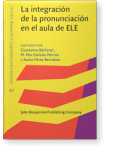Chapter 15
Pronunciation anxiety in Spanish online learning
The aim of this chapter is to investigate the causes of speaking anxiety linked to pronunciation,
pronunciation learning strategies, and coping tactics in online and distance language learning. To explore these
topics, we conducted a study with mixed methods research design including quantitative and qualitative data gathered
from self-reflective questionnaires and in-depth group interviews from students of Spanish as an additional language.
Results reveal that pronunciation anxiety is rarely the main source of foreign language speaking anxiety, but it is a
frequent source of embarrassment. The apprehension coupled with low perceived pronunciation skills, in many cases,
impedes participation in oral practice as well as real-time and asynchronous interactions thus creating a negative
loop. Based on these findings, recommendations are offered on how to manage anxiety to enhance pronunciation
attainment and oral practice in a virtual learning environment.
Article outline
- 1.Introduction: Pronunciation and accent anxiety
- 2.The present study: Pronunciation apprehension in online learning
- 2.1Context
- 2.2Participants
- 2.3Data collection and data analysis
- 2.4Quantitative results
- 2.5Emerging topics
- 2.5.1Pronunciation difficulties
- 2.5.2Intelligibility vs. native-like pronunciation
- 2.5.3Negative self-evaluation
- 2.5.4Fear of communication breakdown
- 3.Good practice on mitigating pronunciation anxiety
- 4.Conclusions and future research
-
References
This content is being prepared for publication; it may be subject to changes.
